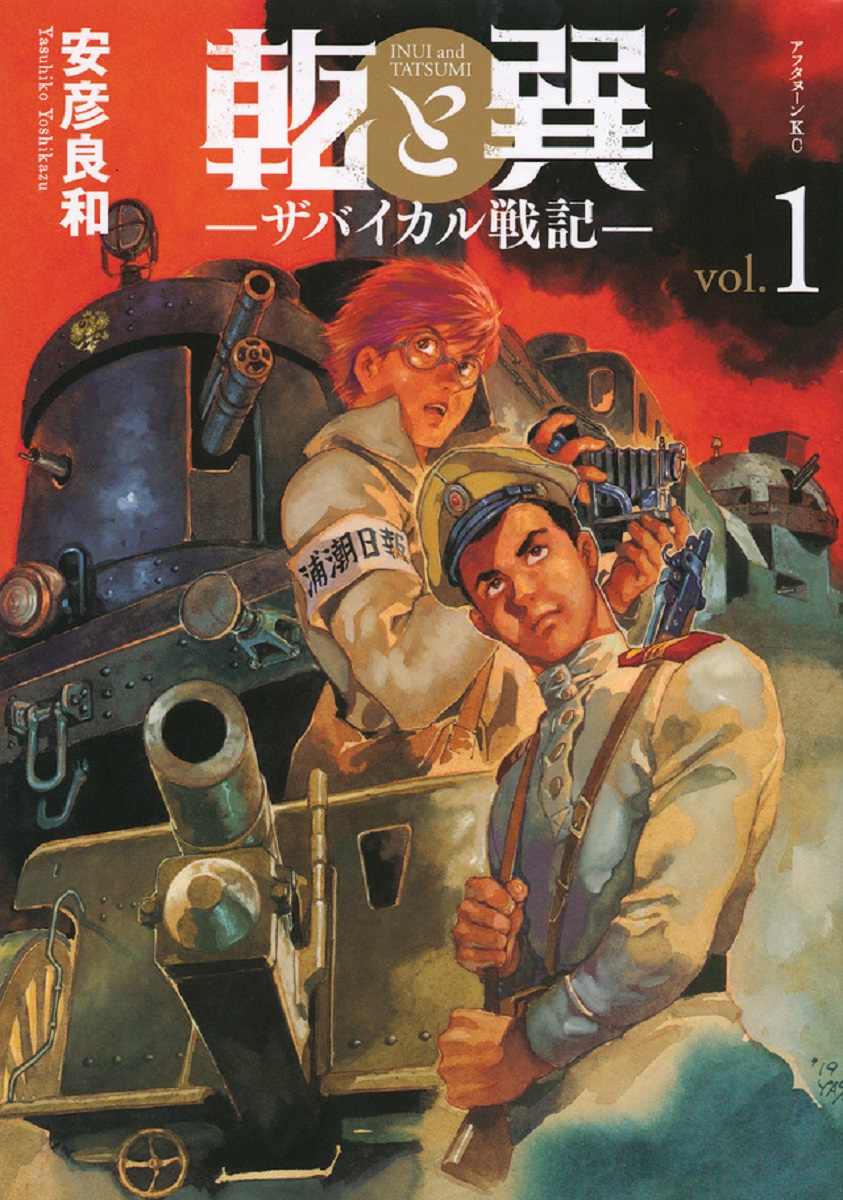- Manga & Anime
- KANTA ON MANGA
Manga on Siberian Intervention Sheds New Light on Modern Japanese History; Brutality in Senseless War

The cover of the first volume of “Inui to Tatsumi — Zabaikal Senki” (“Inui and Tatsumi — The Record of Transbaikal”)
Inui to Tatsumi — Zabaikal Senki (Inui and Tatsumi — The Record of Transbaikal)
by Yoshikazu Yasuhiko (Kodansha)

12:00 JST, September 20, 2024
The Siberian intervention, a conflict in which Japan participated alongside other countries, certainly appears in history textbooks. However, I suspect not many people really think about how it was a war of intervention by the Allies to counter the Russian Revolution. Although it lasted only four years, it is very difficult to understand how it started and ended. Some even say it was a meaningless war for Japan. This time, I will introduce to you the unique full-length manga that depicts the story of the Siberian expedition, called “Inui to Tatsumi — Zabaikal Senki” (“Inui and Tatsumi — The Record of Transbaikal”). The series concluded in July with its 11th volume.
The story is set in the year 1918. The 7th division of the Japanese Imperial Army, based in Hokkaido, is dispatched to Enkaishu, or Primorsky territory to fight the Red Army (Revolutionary Army) of Soviet Russia. The Siberian expedition was a joint Allied operation nominally organized to rescue the Czech troops captured by the Red Army. For Japan, it provided a good opportunity to advance into the Russian Far East. Artilleryman Toji Inui receives a special order from the Japanese Imperial Army to join the command of Cossack chieftain Gen. Semenov, and advances in an armored train toward Zabaikal Province. Meanwhile, Natsuo Tatsumi, who works for a Japanese newspaper based in Vladivostok, is urged by his journalistic spirit and enthusiastically plunges into the warzone. These two men, bound by a strange bond, become entangled in the vortex of the chaotic Russian Revolution.
The author, Yoshikazu Yasuhiko, is most well known as the animator and character designer of “Kido Senshi Gundam” (“Mobile Suit Gundam”), but he has recently become more highly regarded as a historical fiction manga artist. In particular, his 1990 work “Nijiiro no Trotsky” (Rainbow-colored Trotsky) is known as the first manga to give a head-on depiction of the ideals and realities of Manchukuo, which had long been a taboo subject. The story described in “Inui and Tatsumi” belongs to a period before “Rainbow-colored Trotsky.” The Japanese military made the Zabaikal region into an independent state and set up Gen. Semenov as its head. The state was intended to serve as a shield to prevent repercussions of the Russian Revolution from spreading to Japan, but it was also, in effect, a puppet state like Manchukuo. Yasuhiko’s perspective on seeing the Siberian intervention as a path leading to Manchuria sheds new light on the modern history of Japan, I think.
The bombardment war conducted by the armored train Inui boarded is fierce, making for spectacular war-action scenes. However, the highlight of the manga is probably the scene near the end in which Tatsumi arrives in Moscow and meets with Lenin. As a young man, Yasuhiko was arrested for student activism and was expelled from university. Since he had no job, he started working as an animator. With such a personal background, how did Yasuhiko portray the revolutionary giant? The only way to find out is to read this manga.
There were reports during the Siberian intervention that the Japanese military brutally burned down a partisan village. There was no justice in the Siberian intervention. Inui and Tatsumi are far from being heroes and are simply at the mercy of history. The ending of the manga, however, is surprisingly upbeat. It may be an expression of the author doing his best to wish for good luck for the “little guy,” even though there is a hint of bitterness mixed in.
"Culture" POPULAR ARTICLE
-

Van Cleef & Arpels Dazzles with Art Deco Artisanry at Tokyo Exhibit
-

Disney’s ‘Twisted-Wonderland’ Animated Series Puts Villains in Spotlight: New Show Features School Inspired by Classic Disney Films
-

Japan Plans to Distribute Manga Overseas Via New Platform
-

Japanese Craftsman Produces Beautiful and Durable Bags Made of Wood
-

Ayumi Hamasaki’s Shanghai Concert Canceled Day Before Schedule as Part of Beijing Backlash
JN ACCESS RANKING
-

Keidanren Chairman Yoshinobu Tsutsui Visits Kashiwazaki-Kariwa Nuclear Power Plant; Inspects New Emergency Safety System
-

Imports of Rare Earths from China Facing Delays, May Be Caused by Deterioration of Japan-China Relations
-

Japan Exports Rise in October as Slump in U.S. Sales Eases
-

Japan Pulls out of Vietnam Nuclear Project, Complicating Hanoi’s Power Plans
-

Govt Aims to Expand NISA Program Lineup, Abolish Age Restriction




◎上海の日本アニメイベント_20251129YGTGS000921_C-250x168.jpg)



















